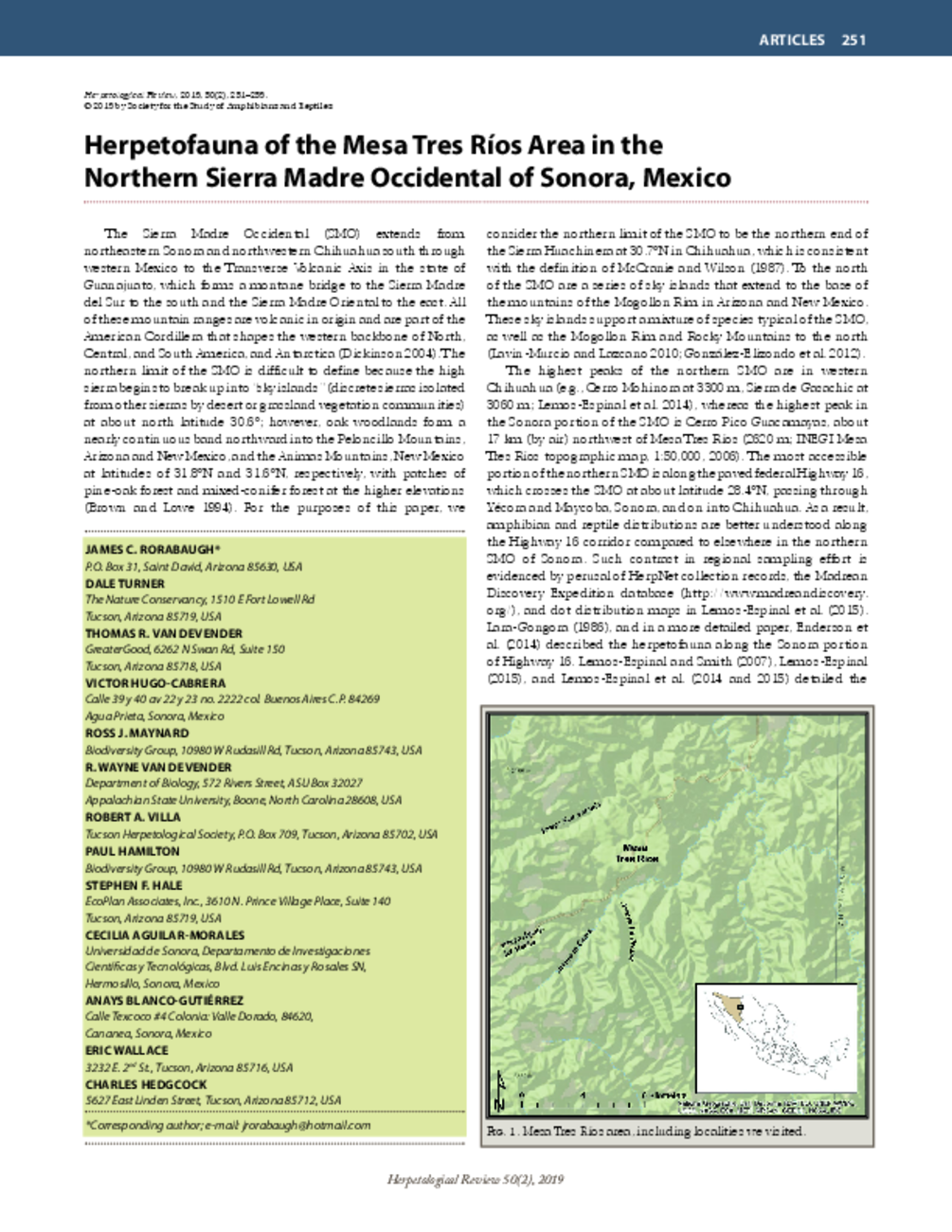Herpetofauna of the Mesa Tres Ríos Area in the Northern Sierra Madre Occidental of Sonora, Mexico
The Sierra Madre Occidental (SMO) extends from northeastern Sonora and northwestern Chihuahua south through western Mexico to the Transverse Volcanic Axis in the state of Guanajuato, which forms a montane bridge to the Sierra Madre del Sur to the south and the Sierra Madre Oriental to the east. All of these mountain ranges are volcanic in origin and are part of the American Cordillera that shapes the western backbone of North, Central, and South America, and Antarctica (Dickinson 2004). The northern limit of the SMO is difficult to define because the high sierra begins to break up into “sky islands” (discrete sierras isolated from other sierras by desert or grassland vegetation communities) at about north latitude 30.6°; however, oak woodlands form a nearly continuous band northward into the Peloncillo Mountains, Arizona and New Mexico, and the Animas Mountains, New Mexico at latitudes of 31.8°N and 31.6°N, respectively, with patches of pine-oak forest and mixed-conifer forest at the higher elevations (Brown and Lowe 1994). For the purposes of this paper, we consider the northern limit of the SMO to be the northern end of the Sierra Huachinera at 30.7°N in Chihuahua, which is consistent with the definition of McCranie and Wilson (1987). To the north of the SMO are a series of sky islands that extend to the base of the mountains of the Mogollon Rim in Arizona and New Mexico. These sky islands support a mixture of species typical of the SMO, as well as the Mogollon Rim and Rocky Mountains to the north (Lavin-Murcio and Lazcano 2010; Gonz lez-Elizondo et al. 2012).

